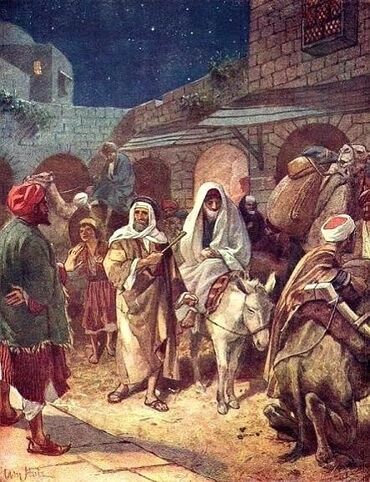There is a strong relationship between Ephrath and Bethlehem in the Bible; they might be two different names for the same town, or it’s possible Ephrath describes a district which includes Bethlehem.
Whatever the case, they play key roles in the Bible. Bethlehem is well-known as the birthplace of Jesus, of course, but was also the birthplace of David and of Benjamin, and Benjamin’s mother Rachel was buried there. The reason for this is that Ephrath and Bethlehem (and Benjamin, incidentally) represent a key element of our spiritual wiring, an element that makes it possible for us to have a spiritual life.
At the deepest levels, our identity, our humanity, is a matter of love – what we love makes us who and what we are. But that love is locked away inside us; it’s not something we can share with others directly. To share it, we have to give it a form – and giving it a form means we are actually turning it into ideas, into truth. As truth it can be shared, and if we’re lucky the people receiving it will be able to run the process in reverse, feeling and internalizing the love contained in that truth.
This process, however, involves two sort of “quantum leaps.” Love is an internal thing, and truth is an external thing (or as Swedenborg puts it, love is celestial in nature and truth is spiritual in nature), and internal things and external things are separate, on two different planes of existence. To express love as truth takes a special process, and to receive love from truth does as well. That’s where Bethlehem comes in.
Bethlehem (and Ephrath and Benjamin) represent what Swedenborg calls “the spiritual of the celestial.” This is where the celestial element – love – can push toward taking a form, can become as “truth-like” as possible. It is matched by something called “the celestial of the spiritual,” where the spiritual element – truth – can become as “love-like” as possible. Through these intermediaries love can jump the gap, kind of like nerve impulses crossing synapses, or like magnetic fields drawing two magnets together. It is the only way we can get love into useful forms, and only way we can share it.
This explains why Joseph could not reveal himself to his brothers in Egypt until Benjamin was with them – Joseph represents the celestial of the spiritual, and needed to be paired with the spiritual of the celestial to communicate. It also explains why the Lord had to be born in Bethlehem: He came in human form so that His perfect, infinite, divine love could be put in form as truth and shared with us. That had to be done by putting an internal, celestial thing – His love – into an external, spiritual form – His truth. That could only happen through the spiritual of the celestial, which is Bethlehem.







